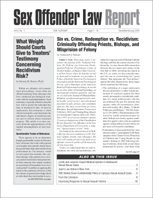Evidence of Other “Bad Acts” in Intimate Partner Violence, Sexual Violence, Stalking, and Human Trafficking Prosecutions
Author: Jennifer G. Long.; Teresa M. Garvey.; Jane Anderson.; Viktoria Kristiansson.
Source: Volume 24, Number 04, June/July 2023 , pp.59-65(7)

< previous article |next article > |return to table of contents
Abstract:
In proving a case of intimate partner violence, sexual violence, stalking, or human trafficking, it is often helpful—even crucial—to introduce evidence that the defendant has committed some other crime or “bad act”—usually before or after (but sometimes contemporaneously with) the charged crime. Such evidence, however, is often viewed with caution by trial and appellate courts, because of the perceived risk that juries will convict the defendant based upon evidence that she or he committed some crime other than the one charged or that the defendant is a “bad person” and therefore probably guilty of the charged crime. This article, part of the legal advocacy group Aequitas’s Strategies in Brief series, provides an introduction to some of the circumstances in which evidence of other crimes and bad acts may be useful in proving a case, the legal theories under which such evidence may be admissible, and the mechanics of seeking to introduce it.Keywords: Federal Rule of Evidence 404(b); Double Jeopardy; Limiting Instructions; Ongoing Conduct as Evidence in Trafficking; Evidence Showing Propensity; Res Gestae or Acts “Inextricably Intertwined” With the Charged Crime; Tests for Admissibility
Affiliations:
1: AEquitas; 2: AEquitas; 3: AEquitas; 4: AEquitas.